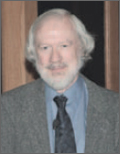209th ECS Meeting | Denver, CO | May 8, 2006

Renewable Energy: Progress and Promise

Renewable Energy: Progress and Promise
Ralph Overend of the National Renewable Energy Laboratory (NREL), Golden, CO delivered the plenary address on Monday morning. The speaker was introduced by Barry MacDougall, Vice-President of the Society and a postdoctoral colleague of Dr. Overend’s at the National Research Council (NRC) of Canada. In the 1970s, Dr. Overend was at the NRC as manager of the Bioenergy Program and advisor on biomass energy to the Department of Energy, Mines, and Resources of the Canadian government. He joined NREL in 1990 to provide technical leadership in biomass, including field management of the U.S. Department of Energy’s Biomass Power Program. Dr. Overend has provided significant input to national policy decisions concerning the resource and carbon cycle implications of large-scale biomass energy deployment.
Dr. Overend began his talk by noting the enormous challenges associated with energy solutions and that a balanced portfolio of energy options was needed. The “sawtooth-shaped” profile of CO2 in the atmosphere was noted underlining the positive slope of this profile and the associated effects on global warming. Capping the CO2 at 550 ppm would require that two innovation gaps be bridged, namely that of carbon sequestration and the development of hydrogen synfuel. The corresponding energy demand gap in a “CBF 550 World” would have to be filled by a combination of nuclear energy and renewables.
The talk next turned to petroleum, in terms of both the resource base and the increasing demand. In this context, the Hubbert’s bell curve was discussed; and it was noted that while consumption of the first trillion barrels of oil spanned a 125-year timeframe, the next trillion would be consumed in only 30-odd years! The effect of population growth and urbanization in this energy equation was discussed with a footnote of the exponential growth in energy demand not only in the U.S. but in other countries such as China and India. It was pointed out that renewables constituted only ca. 6% of the total energy mix in 2004 with an increase to 7% if it was “business as usual.” Clearly this need for capping of carbon-based energy calls for a new paradigm for energy solutions with energy efficiency, renewable energy, nuclear energy, and distributed energy all playing key roles.
Dr. Overend then turned to a summary of NREL’s mission and activities in renewable energy. He identified the laboratory as providing the key link between science and technology in renewable energy. A major area of effort was in energy efficiency, specifically in technologies related to smart roofs and windows, new building materials, and lighting technologies from non-incandescent sources. Recall that a major source of inefficiency in traditional light bulbs lies with the fact that a major fraction of the input electrical energy is transduced into heat rather than light. Other areas of activity at NREL and partnerships with academia and industry involve photovoltaics, solar thermal, wind, biomass, and geothermal. The status and potential of each of these energy approaches were discussed. [Editor’s Note: This portion of the talk complemented that given by Prof. Nathan Lewis of CalTech at the Los Angeles meeting (fall 2005).]
In the concluding portion of the lecture, ethanol economy, hydrogen, and future prospects of renewable energy were addressed. The speaker reminded the audience that “Corn was King in America, especially in the Midwest.” Recent developments in genomics and optimizing corn production were briefly discussed. Dr. Overend then talked about the recommendations coming out of the Department of Energy (Basic Energy Sciences) workshop on solar energy utilization held in April 2005. He concluded the talk on an optimistic note by stating that renewables can meet the 15 TW (terra watts) of non-carbon energy needed to cap the CO2 level at 550 ppm or even 30 TW needed for a 350 ppm level. What this entailed was a concerted R&D effort by engineers and scientists alike and he exhorted the ECS community to meet this challenge by working on renewable energy solutions.
